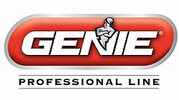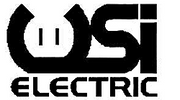- No products in the cart.
What to Know About Home Fire Extinguishers: Types and Uses
15
May
When it comes to the critically important issue of home fire safety, fire extinguishers are part of the first line of defense in protecting your home and property from the ravages of a devastating fire. By allowing you to suppress a small fire before it becomes a larger problem, well-maintained fire extinguishers are critical in any fire safety plan.
Not every fire extinguisher is the same, however. In fact, if you’re looking to purchase an extinguisher for your house, there are four main fire extinguisher types and uses to consider. To help you along in that search, we’ve put together this little guide to fire extinguishers, with a focus on the four main types of extinguishers and their various applications:
Understanding Home Fire Extinguishers
Residential fire extinguishers are portable devices designed to suppress or extinguish small house fires in their early stages by discharging an extinguishing agent that essentially smothers the flames. It’s critically important that you read the specific instructions and know the guidelines provided by the manufacturer when buying fire extinguishers for home safety, but in general, if you can remember the acronym “PASS,” you can effectively operate a fire extinguisher:
Pull the pin | Aim at the base | Squeeze the handle | Sweep from side to side
The Four Types of Fire Extinguisher For Home Use Explained
- Class A: Water and Foam Extinguishers – Class A fire extinguishers contain either water or foam as the extinguishing agent. These are suitable for suppressing fires involving combustible solid materials like wood, paper, cloth, cardboard, or plastics. As handy as Class A extinguishers can be, it’s important to remember that they can be ineffective or even hazardous when used on fires involving flammable liquids, electrical fires, or cooking grease/fat.
- Class B: Foam and Carbon Dioxide (CO2) Extinguishers – Class B fires involve flammable liquids and gas such as gasoline, oil, alcohol, solvents, paints, propane, and natural gas. They tend to spread rapidly and are extremely dangerous if not properly addressed in the fire’s early stages. Foam fire extinguishers smother Class B fires with a blanket of foam, preventing oxygen from reaching the fuel source, while CO2 extinguishers displace the oxygen, eliminating a necessary element for combustion.
- Class C: Carbon Dioxide (CO2) and Dry Chemical Extinguishers – Designed specifically to extinguish fires involving energized electrical equipment, fire extinguishers with a Class C rating are typically identified with a blue label or marking. Filled either with CO2, which leaves no residue, or a powdered agent that interrupts the chemical reaction of the fire, Class C fire extinguishers minimize the risk of electrical shock present when wiring, appliances, or machinery becomes energized and burns.
- Class K: Wet Chemical Extinguishers – Class K fires involve cooking oils, fats, and greases that are commonly found in the kitchen. Because of the high temperatures and potential for re-ignition, they require a specialized extinguishing solution that cools the burning oil or fat and converts it into a soap-like material. Class K fire extinguishers are often identified with a black label and have a long, flexible applicator nozzle to help safely apply the extinguishing agent from a safe distance.
How To Choose the Right Size Fire Extinguisher
After familiarizing yourself with the different fire classes, it’s important to then identify the size of potential fire hazards in your home and assess the kind of flammable materials that are present. Make sure that you not only have the right type of extinguisher in the right room—having a Class K extinguisher in the kitchen, for instance—but that there are enough of them, and they’re all easily accessible.
The Importance of Home Fire Safety
By properly assessing the size and scope of potential fire hazards in your house and having easily accessible fire extinguishers, you can help contain and extinguish any small fire before it has a chance to become a big problem. And don’t forget: if a small fire does become too large or uncontrollable for an extinguisher, evacuate the area right away and contact emergency services.
Check out the extensive collection of fire extinguishers from Wholesale Home, including the popular First Alert Multipurpose Home Fire Extinguisher!





































